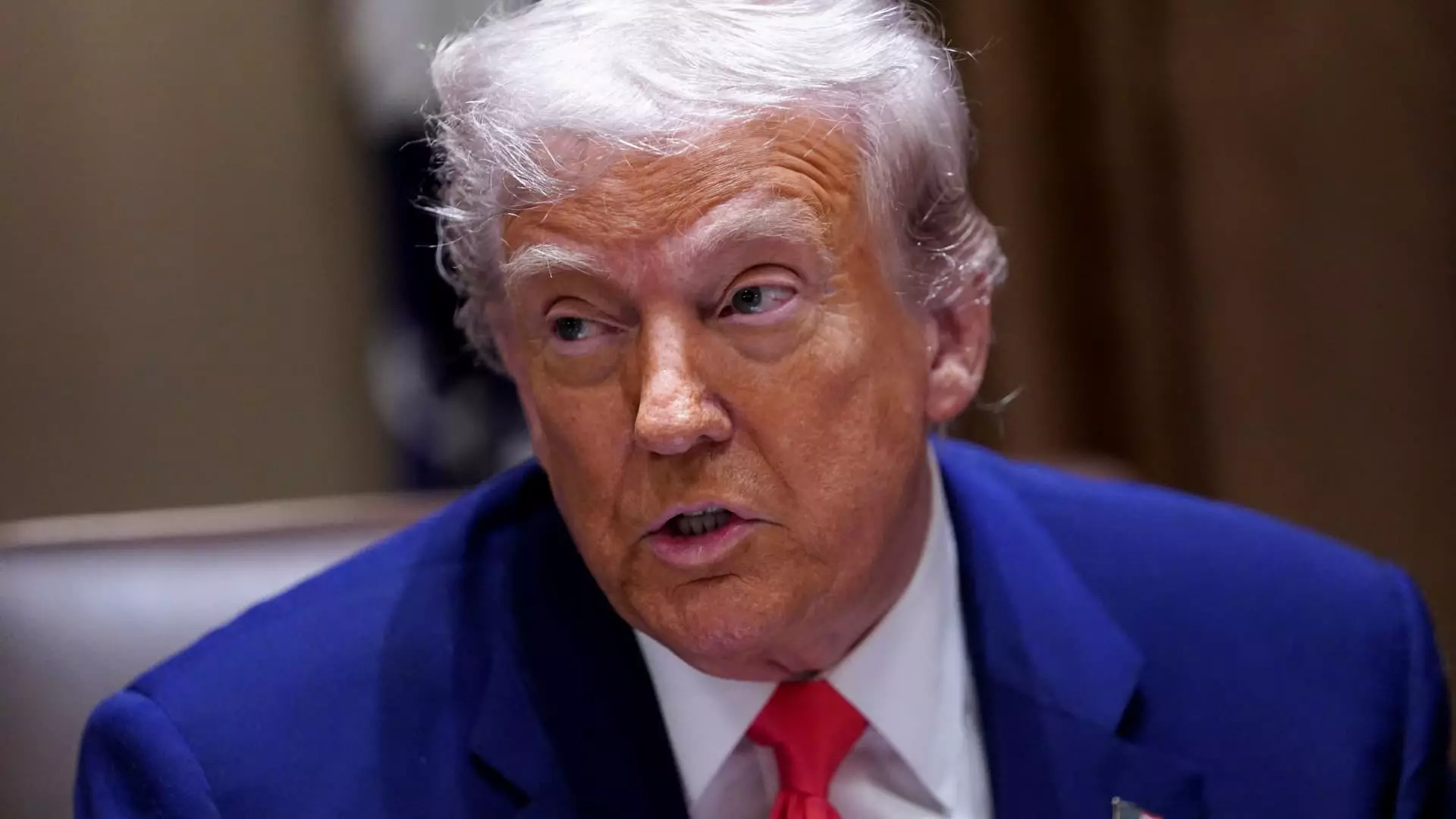In an aggressive move that has sent shockwaves throughout the global economy, President Donald Trump has implemented staggering tariffs on Chinese imports, reaching a jaw-dropping 145%. This is not merely an economic policy but a declaration of war on free trade, and it looks set to derail the delicate balance of global commerce. Erica York, a reputable economist from the Tax Foundation, aptly warns that tariffs approaching triple digits would effectively sever trade relations between major economies like the U.S. and China. When the government begins weighing the benefits of economic isolationism over commerce, the repercussions are bound to resonate far beyond Wall Street.
It’s crucial to grasp the implications of a 145% tariff. Such exorbitant taxes on imported goods involve a complex interplay of market responses and consumer behavior. Not only does it threaten to cut off essential supplies, but it also stifles competition, which is the lifeblood of innovation and quality. When the market has little to no alternative but to absorb these costs, the average consumer suffers—an outcome that is particularly troubling in today’s inflation-ridden economy.
The Immediate Economic Fallout
Consider the immediate ramifications of Trump’s decision: the stock market plummeted after the announcement, reflecting investors’ growing unease. The recent uptick in market gains was swiftly erased, emphasizing the volatility that accompanies protectionist measures. Although the White House provided a temporary reprieve with reduced tariffs on most imports, excluding China, this maneuver seems more like a political strategy than a systematic approach to trade reform. True reform would demand transparent and constructive dialogue with trading partners, not unilateral tariffs designed perhaps for political theater.
Economist York raises a valid point—clarity is paramount, yet ambiguity reigns. With mere speculation about when these tariffs might be reversed, businesses are left in limbo, hamstrung by a lack of direction. Such uncertainty not only diminishes business investment but also threatens the very fabric of supply chains that are intricate and globally intertwined. The reality is that the tariff rates are now riding at heights unseen since the 1940s, heralding a distinctly protectionist era that harkens back to less enlightened times.
Tax Implications: A Double-Edged Sword
On the surface, the proposed tariffs project an increase in federal tax revenues—estimated at $171.6 billion for this year—making it the largest tax hike since 1993. However, this is a classic case of misallocated priorities. Who benefits from increased federal revenue at the expense of economic stability and consumer welfare? Are we genuinely willing to trade the health of our economy in exchange for filling government coffers?
The economic hit that average Americans could incur from these trade policies is alarming. Elevated prices for everyday goods disproportionately burden lower and middle-income families. Instead of championing consumer protection and fostering an environment conducive to growth, this administration’s fixation on tariffs threatens to exacerbate inequality—a key tenet of center-right liberal philosophy that advocates for free market principles.
China’s Reaction: The Other Side of the Coin
If reality is troubling for U.S. consumers and businesses, it is no less for China. In response to America’s aggressive tariffs, China’s decision to escalate its retaliatory levies up to 84% signifies a willingness to engage in a trade war that could spiral out of control. The desire for both nations to maintain their positions could transform strategic negotiations into a battleground mentality, jeopardizing not just economic relations but fostering hostility that could last generations.
This escalation is not merely a chess game; it has real-life consequences. Jobs could be lost, prices could rise, and essential goods could become scarce as each country digs in its heels. This tit-for-tat dynamic highlights the sheer futility of protectionism—both in punishing competitors and in fracturing the very economic relationships that have been carefully cultivated over decades.
As we stand on the precipice of this economic catastrophe, it is essential to reflect on whether we’re truly prepared to embrace isolationism in the name of nationalism or if we will choose to engage collaboratively in an increasingly interconnected world. The stakes couldn’t be higher; it’s time for a reevaluation of our economic strategy before it’s too late.

